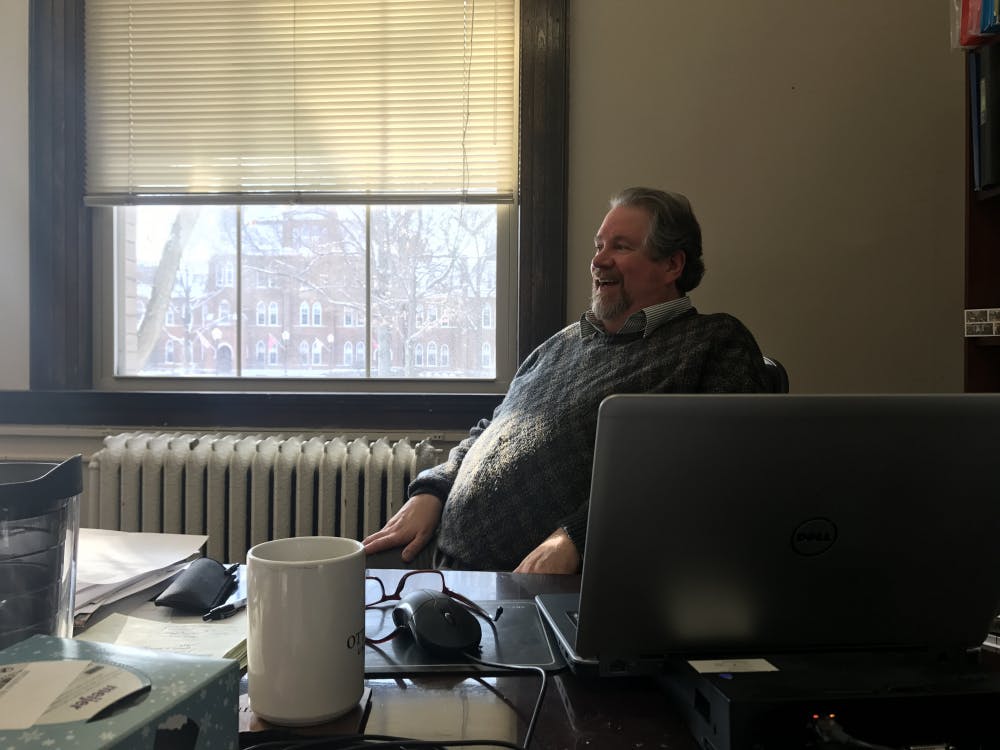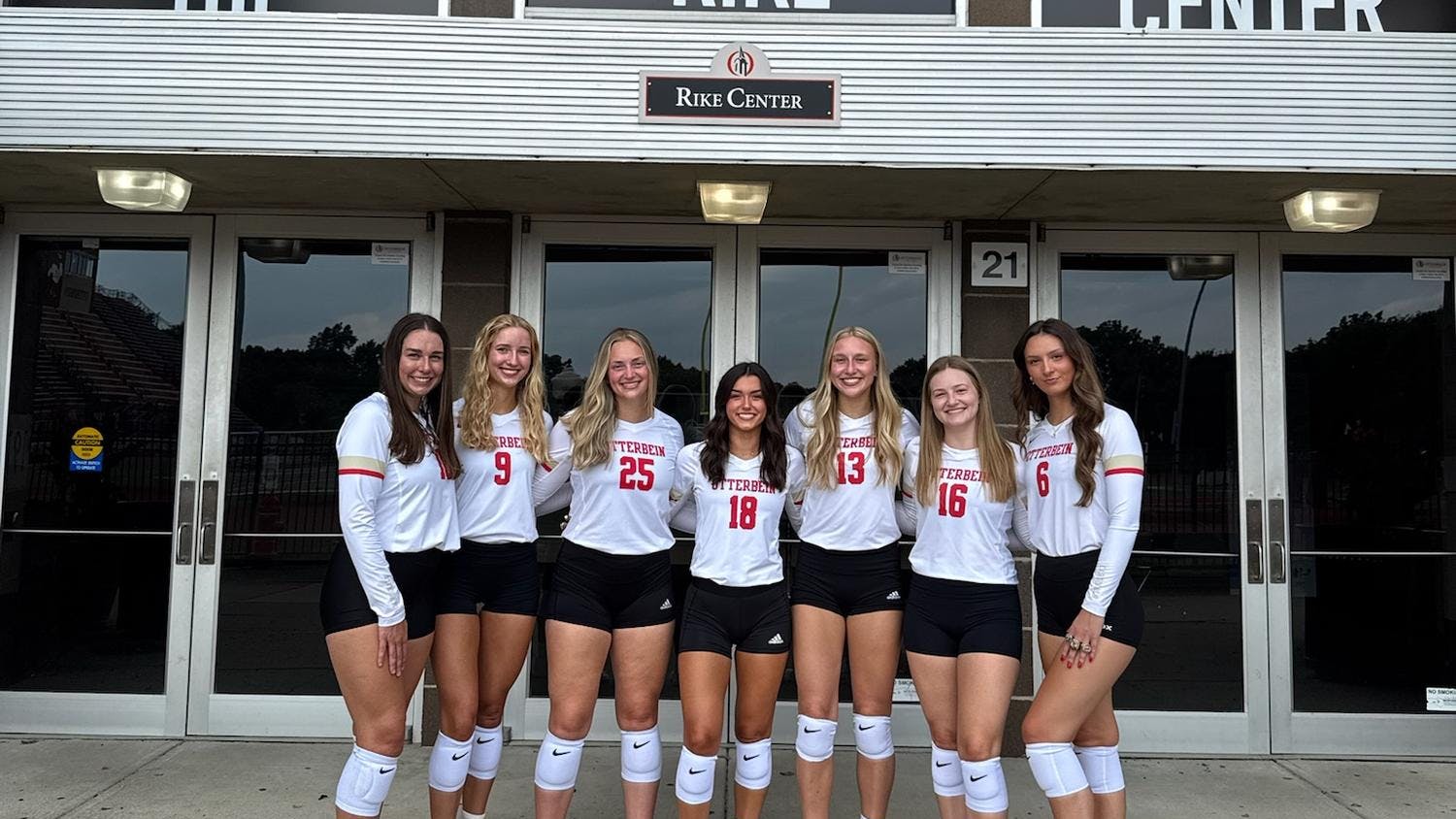Private universities are known to have their small class sizes, a well-rounded curriculum and their student body full of wealthy suburban kids. For many, the cost of tuition can seem out of reach.
"When I was looking, I definitely wasn’t thinking about Otterbein because it would have cost too much," said Anthony Wolff, freshman middle childhood education major. Only a handful of students from Wolff's Columbus City high school went to Otterbein.
Otterbein's admissions team wanted to both address the private school stereotype among Columbus City Schools (CCS) students and reverse a significant drop in freshmen undergraduate enrollment that occurred in 2012.
Admissions began to develop a plan to increase enrollment and to increase their retention rate. This strategic enrollment plan was established in 2013 and has proved to do exactly that, as well as increase revenue.
Otterbein's sticker price for tuition is $31,874 for both in and out-of-state students. The net tuition (the price after need-based aid and merit awards) is about $13,900, according to Otterbein Vice President of Enrollment Management Jefferson Blackburn-Smith. Net tuition is driven in part by students' ability to pay.
For many students, including those from CCS, the price of tuition is the biggest factor in making a college decision.
In Fall 2013, six first-year students from CCS enrolled. Their retention rate was 62 percent. "Students were saying they were unable to stay because they couldn't afford to be here," said Blackburn-Smith.
To boost retention, enrollment and student body diversity, Otterbein significantly increased the discount rate for CCS students. The discount rate is how much an institution may lower the sticker price of their tuition for enrolled students.
Although this may seem like a bad move for a university, lowering the price of tuition actually helped retention and enrollment.
"The discount rate itself would look negative, but the actual impact of it is very, very positive. They were paying less, but there were significantly more students," said Blackburn-Smith.
After one year, CCS graduate enrollment more than quadrupled from six to 28 students. For the last three years, an average of 35 CCS graduates have enrolled and their retention rate has increased to 93 percent. With proven success, this model has been expanded to Southwestern, Whitehall and Westerville City Schools.
"It's helping us fill capacity, increase diversity and do some of our mission-oriented work, serving students that haven't had access to higher education," said Blackburn-Smith. "It's doing a lot of things for us while generating revenue and enrollment for the university."
With this targeted discount rate, Otterbein is able to attract students from many backgrounds. "There are real educational benefits of creating a diverse learning environment where people have different understandings of how the world works," said Blackburn-Smith. "It's not just about race and ethnicity or religion, socioeconomic differences are huge."
Out-of-state students also have unique value that increases diversity. "We would say that the value of a student from California or Colorado is the same as a student from Columbus; they have a different experience that they bring to campus and we all benefit," said Blackburn-Smith.
Otterbein has put many programs into place as a part of this strategic enrollment plan like dual admission with Columbus State Community College and the College Credit Plus program for high school students. Degree programs such as zoo and conservation science, equine science, engineering and theater continue to attract new students and increase enrollment.
The Promise House, counseling services and good academic advising are also considered contributors to the increased enrollment and retention rate.
"Financially it was able to work out for me," said Wolff, freshman middle childhood education major. "I really like being at a four-year college and the environment here; it all ended up working out."
Martha Nyarko, a sophomore at Otterbein, graduated from Mifflin High School on the northeast side of Columbus. Through the Seniors to Sophomores program, she was a full-time student at Otterbein her senior year of high school with her tuition fully paid for that year. This influenced her decision to attend Otterbein for the remainder of her college career.
As a senior, Nyarko was considering attending public universities because their tuition was much lower. When she attended Otterbein as a senior in high school, her adviser told her about scholarship and grant opportunities she could apply for. This made attending a private institution much more realistic for her.
Nyarko, a double major in pre-med and allied health with a minor in psychology, sees the diversity at Otterbein, and says it is important. "It's much more diverse, you see different people with different backgrounds and perspectives," she said.
This diverse classroom experience can also prove useful after leaving Otterbein.
"You're in college and you're preparing for the real world. The real world isn't going to have only one kind of person. It's not going to be the same people who think the same, look the same, and act the same," said Nyarko. "You're going to meet different kinds of people. I feel like that's a good thing."








